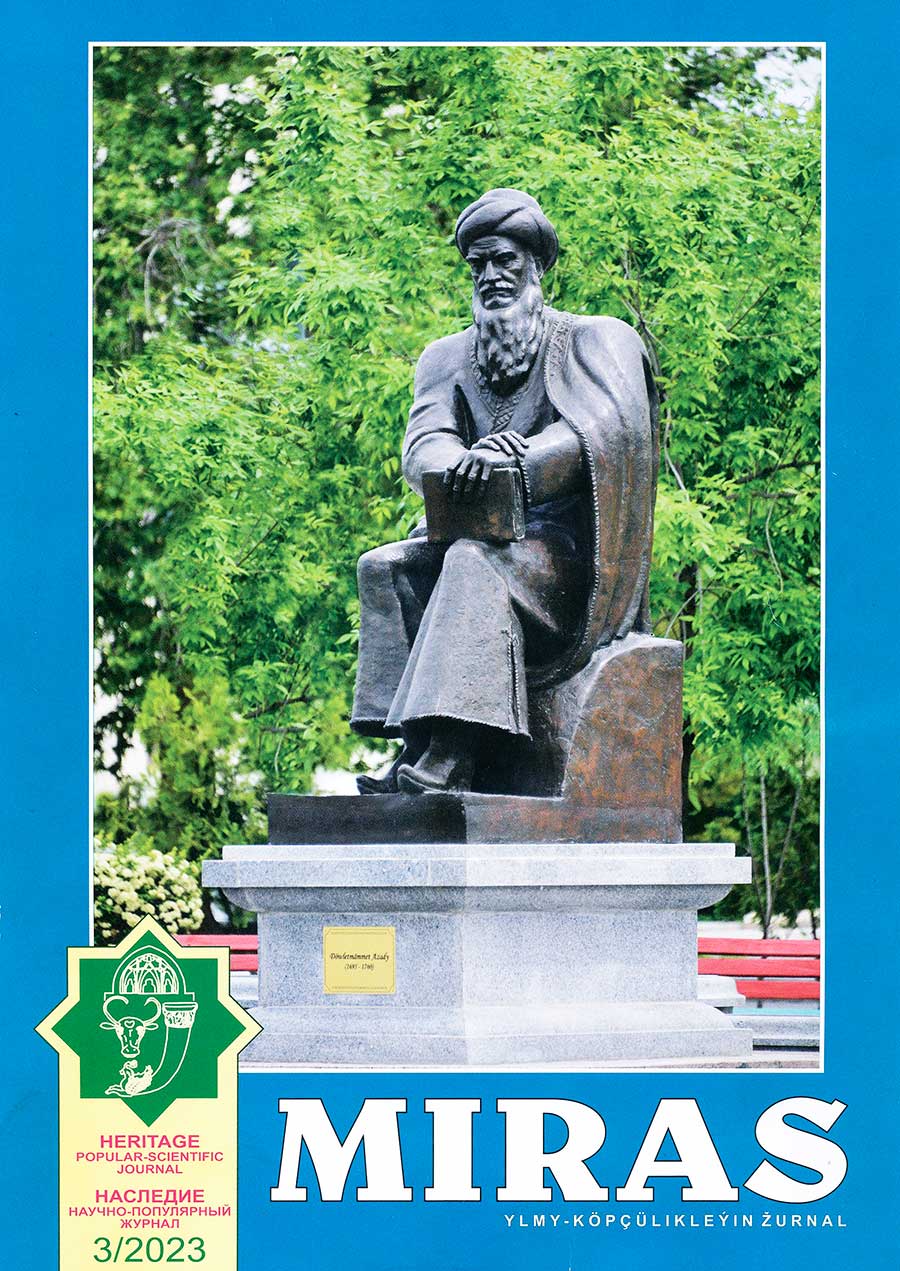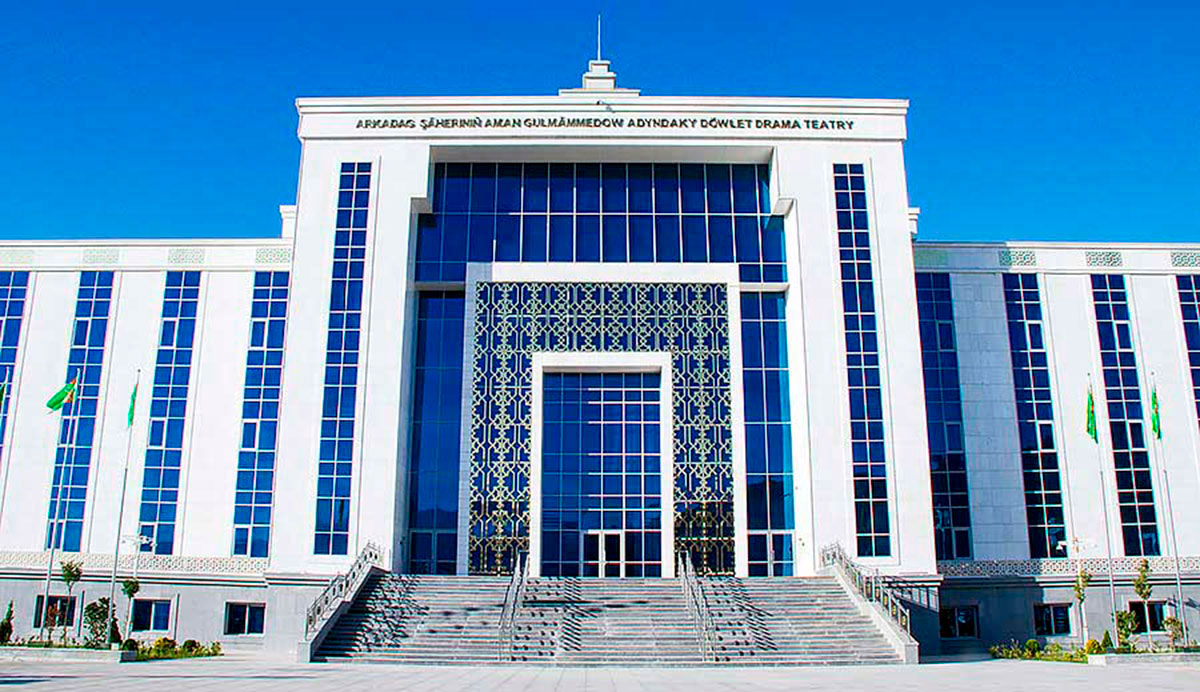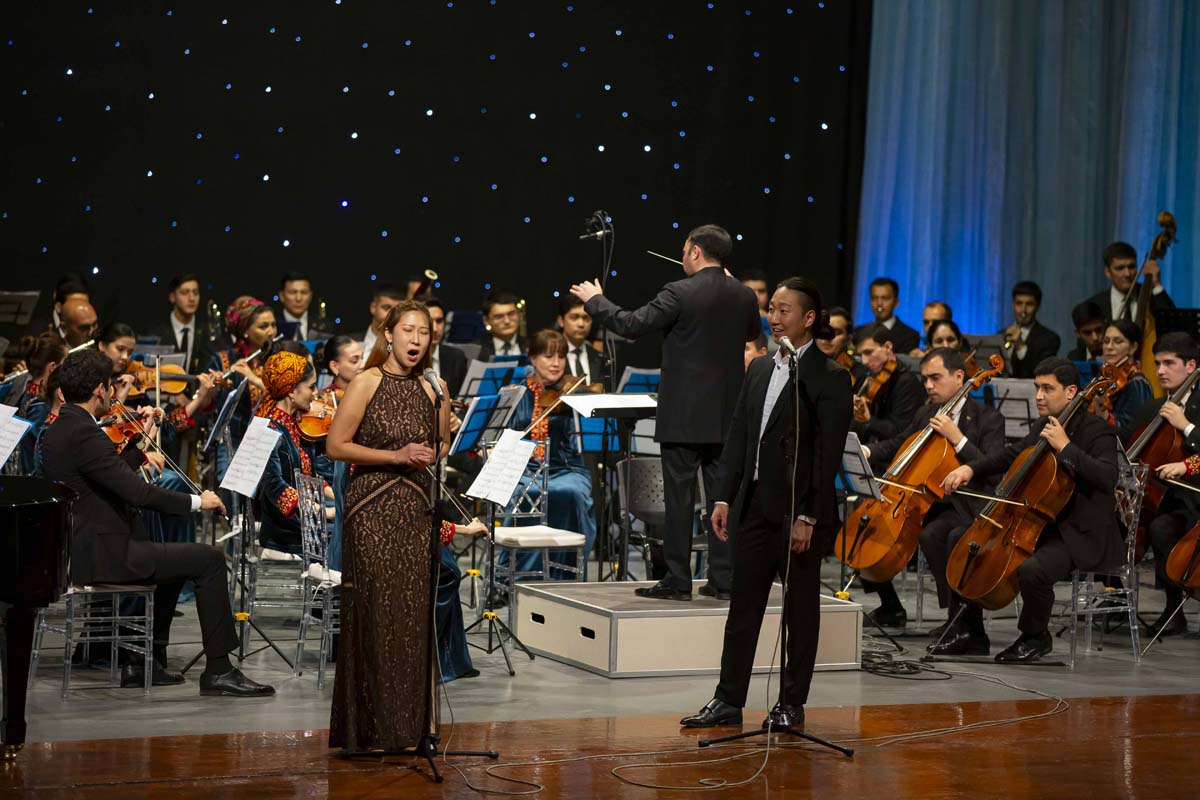The next issue of the Miras quarterly popular science journal, published by the Magtymguly Institute of Language, Literature and National Manuscripts of the Academy of Sciences of Turkmenistan in Turkmen, Russian and English, has been published.
Addressed to a wide range of readers, the journal continues a series of publications about new discoveries, as well as the results of research in the field of historical, cultural and spiritual heritage of our people, including manuscripts, issues of the development of linguistics, literary criticism and historical science in the country.
The first pages contain congratulatory messages from President Serdar Berdimuhamedov to schoolchildren, students, teachers and education workers of independent neutral Turkmenistan on the occasion of the Day of Knowledge and Student Youth, as well as greeting messages from the head of state to the participants in the final round of the competition “Çalsana, bagşy!” among dutarists, bakhshi musicians and the Turkmen people on the occasion of the Independence Day of the Homeland.
The traditional heading “New Scientific Discoveries” presents the publication of the teacher of the Turkish Pamuk-Kale University “The Treasure of the Mind of Magtymguly Fraghi”, which narrates that fate presented the Turkmen people with a valuable gift, and this gift is the poet-thinker Magtymguly Fraghi, who made a huge contribution to the treasury world culture.
The article notes that the National Leader of the Turkmen people, Chairman of the Halk Maslakhaty of Turkmenistan Gurbanguly Berdimuhamedov presented the people with his poem “The Fount of the Mind of Magtymguly Fraghi,” dedicated to the world-famous poet-thinker, whose 300th anniversary will be widely celebrated in 2024. Magtymguly is a great historical figure for all Turkic peoples; therefore, in honor of this great holiday, various cultural events will be organized.
Also presented to the readers’ attention is the article “Literary Sources of Magtymguly Fraghi’s creativity”, which notes that the works of the great thinker serve as a tool for identifying the spiritual relationship between creative people through Turkmen literature. Without a doubt, first of all, Magtymguly was inspired by the work of his father Dovletmammet Azadi, as well as representatives of literature who lived in different times and in different places, whose poetry he studied. Their works had a huge influence on the formation of the literary views of the poet-thinker Magtymguly Fraghi.
The scientific article “The Early Parni State in Southern Turkmenistan” published in the same section will attract the attention of scientific circles.
It notes that the results of archaeological research by Turkmen and foreign scientists have revealed new sources that make it possible to analyze the stages of the foundation of the Parni (Parthians) in Southern Turkmenistan, who created the Great Parthian State and occupied an important place in the international political life and cultural development of the ancient period, to restore the pages of their early stories. These materials make it clear that the Parnies – the ancient ancestors of the Turkmen – take the experience of state building from the earliest periods. The article also provides archaeological information and anthropological finds of famous historians.
In the same section, the publication “Caravan route from Khorasan to Khorezm” is presented, which tells about the routes of the Great Silk Road in various directions. In those periods, several caravan routes passed through the territory of Turkmenistan, and along them there were a number of sites (cities, caravanserais, wells), located at a certain distance from each other. In their works, many historians note that as a result of archaeological excavations, finds and remains of production were discovered confirming that cities and caravanserais were trade and craft centers and were fortified with high fortress walls with towers.
The author of the article describes the caravan route of the Great Silk Road from Nisa to Gurgench, the capital of Khorezm, which consisted of three parts. The first, southern part ran to the west and reached from Nisa to Abhaderan. The second, middle part led to the north – from Abhaderan to Kurtush-ata, the third – to Gurgench. So, by medieval standards, the Nisa-Gurgench caravan route is 100 farsakhs (600 km), and it takes 14 days to cover it on camels. Discovered historical sources are evidence that Turkmenistan occupied a huge place in the Great Silk Road complex and maintained close contacts with near and far countries.
The section “Interaction of Cultures, Peoples and Civilizations” opens with the article “Proverbs in the Dictionary of Mahmud Kashgari.” The material contains information about the first published Turkmen-Arabic explanatory dictionary “Divan of Turkic Languages” by the Turkmen linguist and scientist Mahmud Kashgari, who lived in 1008–1105. The dictionary was translated from Arabic based on a single copy of the original stored in the Millet Library in Istanbul. Compiled in 1074 and including valuable information about the Turkmen language, literature, history and culture of the Turkic peoples, it is an important guide for Turkic scholars.
The publication ends with the section “Chronicle of Scientific and Cultural Life”, which provides an overview of the events in the social, scientific and cultural life of the country for the third quarter of this year, held under the motto “Happy Youth with Arkadag Serdar”. Here, in chronological order, the progressive peace-keeping course pursued by President Serdar Berdimuhamedov and vivid evidence of socially oriented large-scale transformations aimed at strengthening the economic power and further prosperity of the Homeland and improving the well-being of the people are reflected.
The journal, published at a high printing level, is colorfully illustrated with reproductions of paintings and photographs by contemporary masters of art, rare museum and archival materials and cartographic drawings and is intended for a wide readership.







